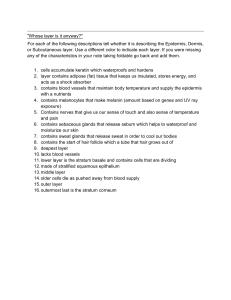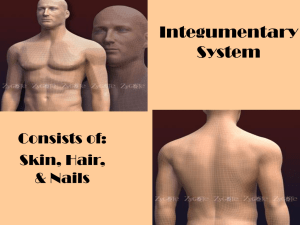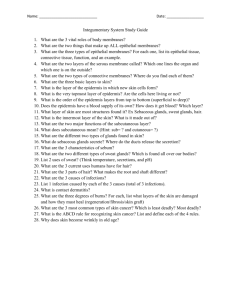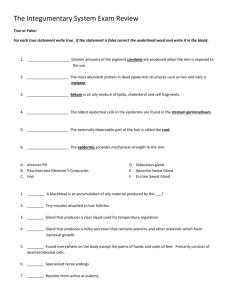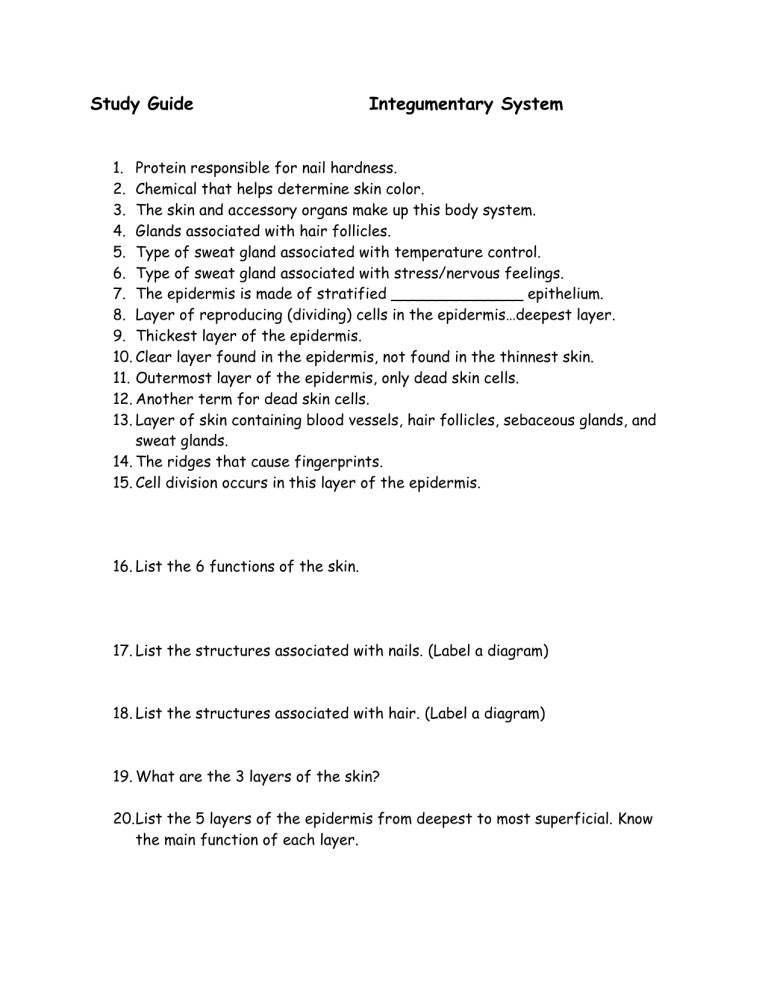
Study Guide Integumentary System 1. Protein responsible for nail hardness. 2. Chemical that helps determine skin color. 3. The skin and accessory organs make up this body system. 4. Glands associated with hair follicles. 5. Type of sweat gland associated with temperature control. 6. Type of sweat gland associated with stress/nervous feelings. 7. The epidermis is made of stratified ______________ epithelium. 8. Layer of reproducing (dividing) cells in the epidermis…deepest layer. 9. Thickest layer of the epidermis. 10. Clear layer found in the epidermis, not found in the thinnest skin. 11. Outermost layer of the epidermis, only dead skin cells. 12. Another term for dead skin cells. 13. Layer of skin containing blood vessels, hair follicles, sebaceous glands, and sweat glands. 14. The ridges that cause fingerprints. 15. Cell division occurs in this layer of the epidermis. 16. List the 6 functions of the skin. 17. List the structures associated with nails. (Label a diagram) 18. List the structures associated with hair. (Label a diagram) 19. What are the 3 layers of the skin? 20. List the 5 layers of the epidermis from deepest to most superficial. Know the main function of each layer. 21. What are the 2 layers of the dermis. 22. What are the 2 types of sweat glands and when does a person secrete sweat from each? 23. What are the 4 types of cells found in the epidermis and their functions. 24. Most of the cells of the epidermis are ____________________. 25. What are the 2 most abundant proteins in the dermis? 26. What is a cutaneous gland, and what type of gland is it? 27. What is a sebaceous gland and what does it secrete? 28. What causes acne? 29. What are 4 functions of sebum? 30. Know these terms: a. Dermal papilla b. Pappillae c. Melanin d. Melanocyte e. Arrector pili muscle f. Keratin
